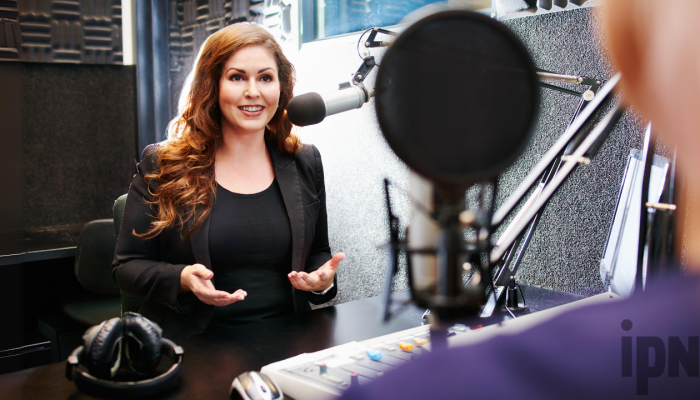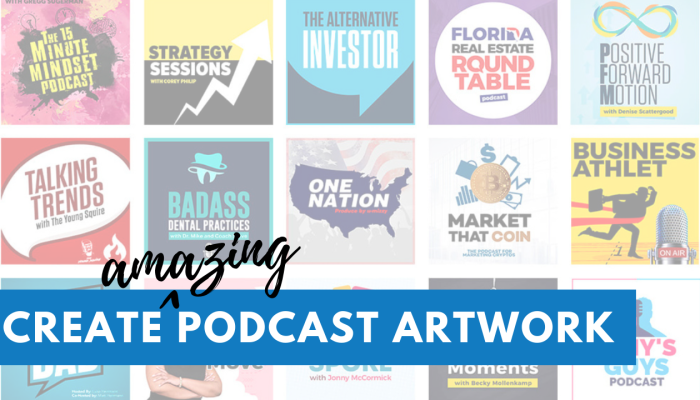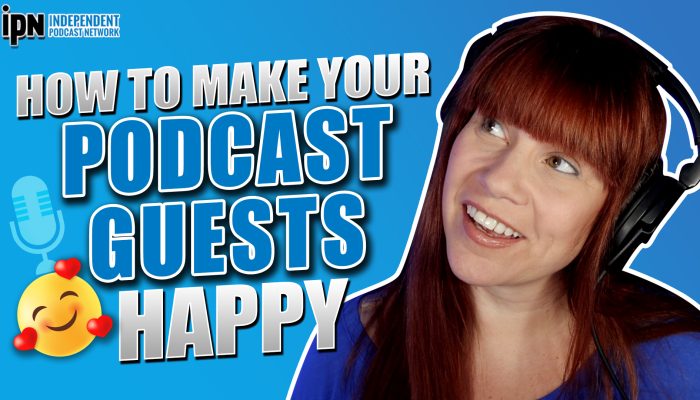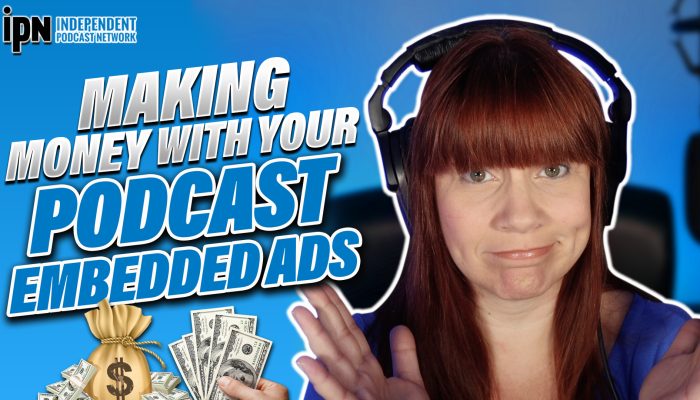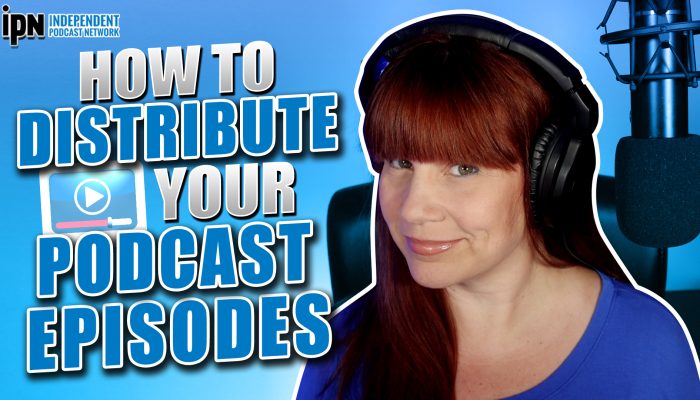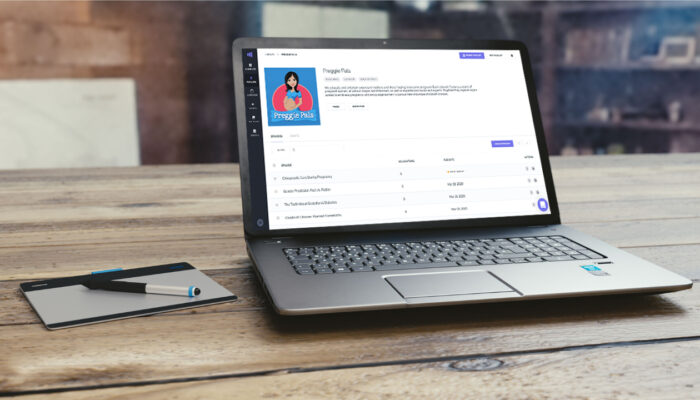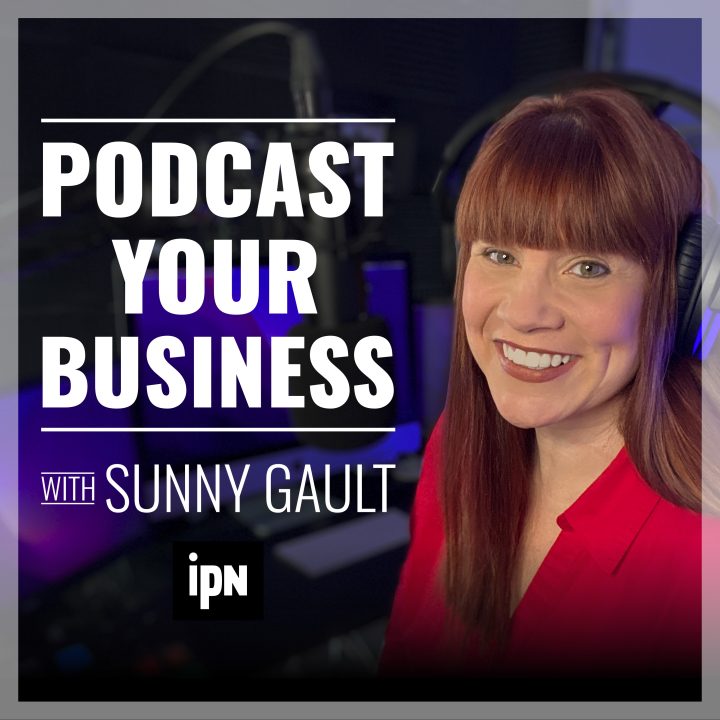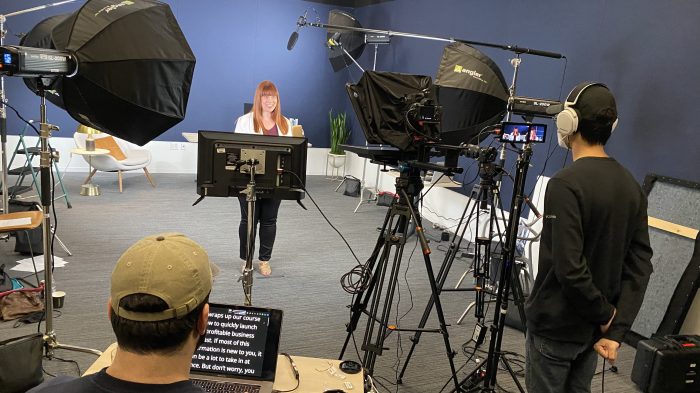
With millions of podcasts already available and new ones launching daily, standing out in this crowded space requires more than just a good idea and a microphone. It demands strategy, persistence, and a solid understanding of the podcasting ecosystem.
This comprehensive guide is designed to walk you through launching a successful podcast in 2024. From conceptualizing your show to optimizing for discoverability, we’ll cover every crucial step, providing you with up-to-date insights and practical tips to set your podcast up for success.
Step #1: Define Your Podcast Concept and Target Audience
Success starts with a clear concept and a solid understanding of your audience. Let’s break this down into three key components that will set the stage for your podcast’s success.
- Choosing a Niche and Topic: Start by identifying a niche that aligns with your passions, expertise, or unique perspective. While evergreen categories like true crime and comedy thrive in 2024, there’s a growing appetite for niche topics. Think sustainable living, emerging technologies, or mental health in the digital age.
- Identifying Your Ideal Listener: With your niche defined, it’s time to envision your ideal listener. Who are they? What drives them? What challenges do they face? Creating a detailed audience avatar for your podcast isn’t just a fun exercise – it’s a powerful tool that will guide your content creation and marketing efforts.
- Crafting a Unique Value Proposition: Here’s where you define your podcast’s superpower – its Unique Value Proposition (UVP). This is a clear statement that communicates the distinct benefit your podcast offers to listeners along with how your unique style and voice support that value proposition. Think of it as your elevator pitch: Why should someone choose your podcast over the millions of others out there?
Step #2: Create a Content Calendar
A content calendar is your secret weapon for maintaining a consistent publishing schedule. It helps you plan ahead, avoid last-minute scrambles, and ensure a good mix of topics. Here’s how to create an effective content calendar:
- Decide on your publishing frequency (weekly, bi-weekly, monthly).
- Use a digital tool (like Trello, Asana, or even Google Sheets) to map out your episodes.
- Plan at least 8-12 weeks in advance.
- Include episode titles, main topics, potential guests, and any special segments.
- Mark important dates or events in your niche that you might want to create content around.
- Leave some flexibility for timely or trending topics.
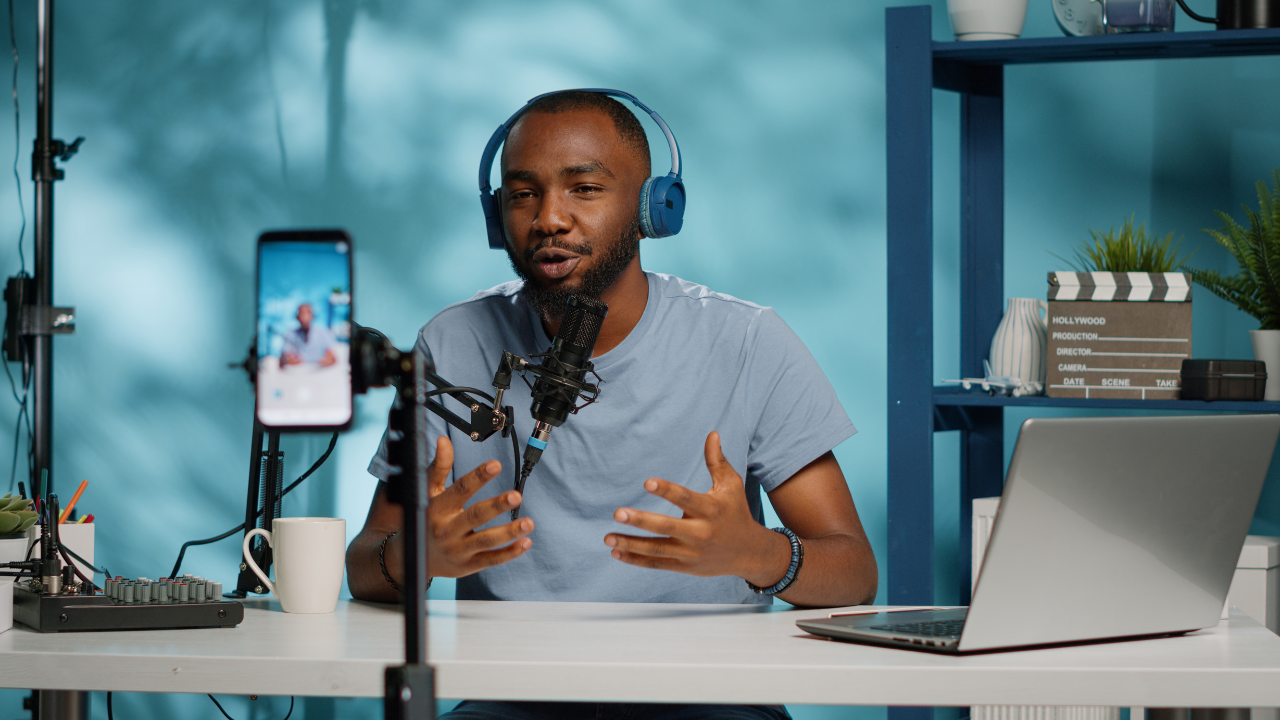
Step #3: Record and Edit Your Episodes
Now it’s time for the exciting part – bringing your podcast to life! Recording and editing are where the magic happens, transforming your ideas into a polished, professional-sounding show.
When starting out, use the equipment you have to record and edit your podcast, even if that means recording your podcast on your smartphone. Once you get the basics down and learn more, you can start investing in higher-end equipment.
To make high-quality recordings on any equipment, follow these tips:
- Find a Quiet Space: Choose a room with minimal echo and background noise. In 2024, many podcasters are using acoustic panels or even portable isolation booths for optimal sound.
- Mic Technique Matters: Position yourself about 6-8 inches from the microphone. Speak across the mic rather than directly into it to reduce plosives (those popping ‘p’ sounds).
- Do a Test Recording: Always do a quick sound check before diving into your full episode.
- Be Mindful of Movement: Avoid shuffling papers, tapping on desks, or fidgeting with jewelry that could create unwanted noise.
- Record in Sections: If you make a mistake, pause, take a breath, and start the sentence again. It’s easier to edit out mistakes than to re-record an entire episode.
With your recordings complete, you can start editing them together. There are plenty of apps for editing podcast episodes such as Audacity and Alitu.
Step #4: Create Compelling Podcast Artwork and Description
Your podcast cover art is your show’s visual calling card. It needs to be attention-grabbing, professional, and representative of your content. We made a complete guide to creating podcast artwork you can use to get started.
You’ll also need a description. Treat your description like your podcast’s elevator pitch to potential listeners. It needs to quickly and effectively communicate what your podcast is about and why someone should listen.
Step #5: Choose a Reliable Podcast Hosting Platform
Now that you’ve recorded and edited your podcast episodes, you need a place to store and distribute them. This is where podcast hosting platforms come in. Choosing the right hosting platform is crucial for your podcast’s success, as it affects everything from your show’s discoverability to your ability to monetize.
The easiest hosting platforms to get started with are Buzzsprout, Libsyn, and Podbean. Each of these platforms can help you submit your podcast to directories so it gets distributed to all main podcasting platforms such as Apple Podcasts and Spotify.
Step #6: Use Social Media for Discoverability
Social media remains a powerful tool for podcast promotion and discoverability. But, to make the most of it, you’ll need to follow industry best practices for your content to get found such as:
- Create Platform-Specific Content: Tailor your promotional content to each social media platform. For instance, use short, catchy clips for TikTok or Instagram Reels.
- Use Relevant Hashtags: Research and use popular, relevant hashtags to increase your reach, particularly on X (formerly known as Twitter).
- Engage with Your Community: Respond to comments and engage with your listeners on social media to build a loyal community.
- Collaborate with Influencers: Partner with influencers or other podcasters in your niche to expand your reach.
- Share Valuable Content: Don’t just promote your podcast. Share interesting snippets, behind-the-scenes content, or valuable insights related to your podcast topic.
- Utilize Audio Sharing Platforms: Use platforms like Audiogram or Headliner to create shareable audio clips with visuals.
Conclusion
Every successful podcast started with a single episode. The key is to start, learn from each experience, and keep moving forward. Your unique voice and perspective have the potential to inform, entertain, and inspire listeners around the world.
As you launch your podcast, you’re not just starting a show – you’re opening a channel for connection, storytelling, and sharing ideas. In the dynamic digital landscape of 2024, your podcast has the potential to make a real impact.
So, take that first step. Record that first episode. Press publish. Your podcast journey begins now, and the possibilities are endless. Happy podcasting!
